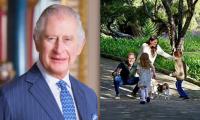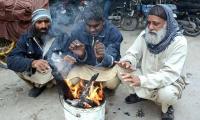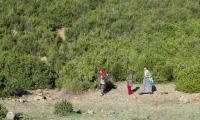The China-Pakistan Economic Corridor (CPEC) is a transformative project which will be potentially reshaping the landscape of Pakistan and the contours of its future.
CPEC, a cornerstone of Beijing’s ambitious Belt and Road Initiative (BRI), is not just a series of infrastructure projects, but it is a catalyst for a fundamental shift in the region’s economic dynamics. This venture has the potential to propel Pakistan into a new era of development, provided it navigates the complex interplay of growth, sustainability, and inclusivity.
Rostow’s model of economic growth aptly describes Pakistan’s journey. The nation, traditionally bound by limited investment and savings, has been nudging towards a takeoff stage, primarily aided by Chinese investments. This infusion of capital and resources is pivotal. However, the path ahead is not just about reaching a state of takeoff but sustaining it towards maturity, a stage where mass production and consumption become the norm.
The challenge for Pakistan is to blend economic growth with holistic development. This dichotomy – vertical growth versus horizontal development – is crucial. While growth often signifies quantitative economic enhancements, development encapsulates a broader spectrum, including social, environmental, and cultural dimensions.
The recent COP28 conference underscores a global pivot towards green growth and sustainable development. The EU’s carbon border adjustment mechanism exemplifies this shift. For Pakistan and China, this global trend presents both a challenge and an opportunity. The second phase of CPEC, with its emphasis on human development and sustainable practices, aligns well with these emerging global norms.
The key to success lies in integrating growth with sustainable practices. This integration, refers to as inclusive green growth, is not merely an environmental or economic agenda; it is a comprehensive framework that encompasses everything from cultural exchanges to financial governance.
In the evolving narrative of Pakistan-China cooperation, particularly under the ambit of CPEC, a series of foundational elements, articulated as alphabets, paints a vivid picture of this multifaceted partnership. These alphabets, from A to I, encapsulate the essence and aspirations of this alliance, weaving a story of development, sustainability, and mutual growth.
At the heart of this cooperation lies ‘A’, representing the crucial role of people-to-people exchanges as ‘a lot of people talking to a lot of people’. These exchanges transcend mere diplomatic interactions, fostering deep cultural engagement and understanding between the citizens of both nations. This human connection forms the bedrock of the partnership, ensuring that the ties between Pakistan and China are rooted in mutual respect and shared experiences. It is a recognition that beyond the realms of high-level politics and economics, the true spirit of collaboration is nurtured in the hearts and minds of the people.
‘B’ stands for the bankability of investment projects, a cornerstone in ensuring the economic viability and sustainability of initiatives under CPEC. This focus on bankability means that every project, particularly those in the realm of green investment, is not just a financial venture but a testament to the long-term commitment of both nations towards sustainable and profitable development. It is a balance between economic pragmatism and visionary investment, ensuring that the fruit of this cooperation are ripe for harvest for generations to come.
The narrative then shifts to ‘C’, which encompasses climate-smart policies, a testament to environmental consciousness at the core of Pakistan-China cooperation. In an era where climate change poses one of the greatest challenges to humanity, these policies reflect a shared commitment to a development path that is in harmony with the environment. It is a strategic alignment, ensuring that the march towards economic growth does not come at the expense of the planet.
‘D’ brings in a blend of diplomacy and development, intertwining foreign relations with the goal of sustainable growth. This approach, often referred to as green diplomacy, is a nuanced way of ensuring that international engagements and developmental agendas are mutually reinforcing and are aligned with global environmental goals. It is a statement that in the corridors of power where decisions are made, sustainability is not just a buzzword but a guiding principle.
Moving on to ‘E’, we see an emphasis on the efficiency of economy, energy, and environment. This triad is critical in addressing the multifaceted crises that Pakistan faces, from economic challenges to energy shortages and environmental degradation. It is an acknowledgment that these issues are interconnected and that solutions must be holistic and integrated, striking a balance that catalyzes growth while preserving the ecosystem.
‘F’ focuses on financial governance, particularly in the realm of green investments. With China initiating green finance partnerships, a clear signal is sent about the direction of future investments. This move, contrasting with traditional energy investment models, underscores a commitment to pioneering a path of financial governance that is aligned with global trends towards sustainable development.
‘G’, the greening of CPEC, is perhaps the most vivid illustration of the shift in developmental philosophy. It is a transformative step, integrating environmental considerations into the heart of one of the most ambitious infrastructural projects of the 21st century. This greening process is not just about reducing carbon footprint but also about reimagining development in a way that is in sync with nature.
‘H’ is about human development through communities. This aspect ensures that the benefits of CPEC and the broader BRI percolate down to the grassroots level. It is a shift from viewing development through the narrow lens of economic metrics to understanding it as a tool for improving the lives of people, evident in the transition from coal to more sustainable energy sources.
Lastly, ‘I’ stands for integration, a vision that transcends bilateral relations and encompasses regional integration in economic, environmental, and energy affairs. This broad perspective fosters a collaborative spirit that goes beyond the borders of Pakistan and China, envisioning a region that is economically integrated and environmentally conscious.
Together, these alphabets weave a narrative of a partnership that is dynamic, multifaceted, and forward-looking, setting a precedent for international cooperation in the modern era.
In this story, Pakistan and China are not just neighbours linked by geography, but partners embarked on a journey towards a future that is prosperous, sustainable, and inclusive.
CPEC is pivotal for Pakistan’s economic transformation, but its success depends on integrating sustainable and equitable development in line with Rostow’s model of growth. This approach transcends mere economic growth, emphasizing the importance of environmental sustainability and social inclusivity.
Adapting to global sustainability trends, CPEC’s focus on human development, green policies, and regional integration is essential. Ultimately, blending economic progress with sustainable and inclusive practices is key to ensuring CPEC’s role as a driver of comprehensive and long-term growth in Pakistan.
The writer has a doctorate in energy economics and serves as a research fellow in the Sustainable Development Policy Institute (SDPI). He can be reached at X: @Khalidwaleed and Eemail: khalidwaleed@sdpi.org
There are over 11 million Pakistanis settled abroad, out of which around six million work in Gulf and Middle East
This year alone, US Treasury would have to roll-over $10 to $14 trillion in maturing short-term debt
Tear gas no longer marks just protest sites; it paints entire cities as battlegrounds but then again, PTI did it first
Political structures and governance systems have been central to economic and social development
It is confirmed now 40 Pakistanis had died after boat of migrants had capsized in sea near Greece
Many people believe that in future, AI will play an even more significant role in their lives







